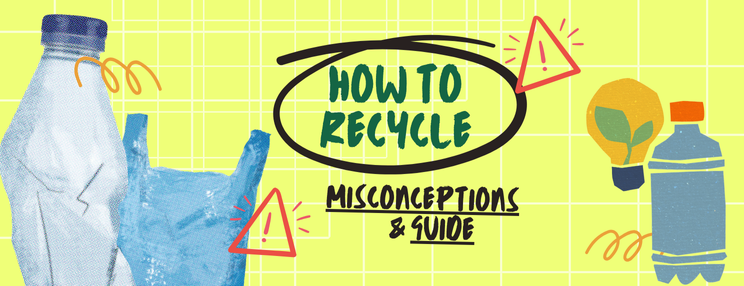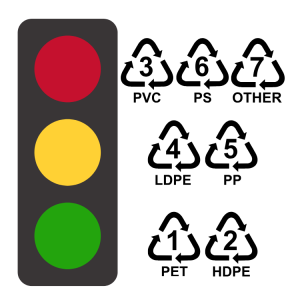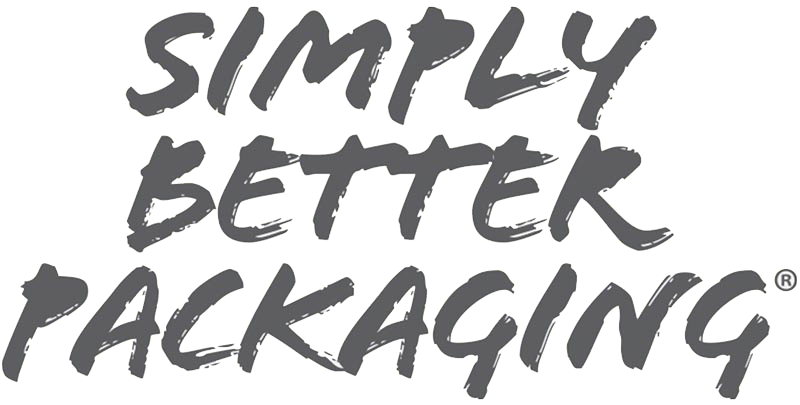How to Recycle: Misconceptions & Guide

Why Should YOU Care?
Up to 25% of what we place into recycling bins doesn’t belong there. When we recycle improperly, recycling plants may send entire loads to the landfill, driving up costs and energy use, and damaging materials that could be recycled. So, more paper, plastics, and other materials must be made, and the cycle continues. Shirking the individual’s duty to recycle leads to diffusion of responsibility—a group psychological phenomenon where individuals are less likely to act when others are also responsible, assuming someone else will. So, while it may not be the end of the world if you don’t recycle properly, your neighbors are likely to think the same thing, resulting in most people not recycling properly. The best course of action is to take personal responsibility for the future you want to see.
Common Misconceptions
- “Everything we recycle is actually recycled.” Only about 35% of the waste Americans generate gets recycled due to contamination and a lack of infrastructure for the volume and certain complex processes.
- “Biodegradable and compostable products are always more environmentally friendly.” Biodegradable materials require specific conditions to decompose, which landfills are typically not conducive to. Additionally, industrial composting facilities are not widely available.
- “Recycling is a complete solution to waste.” While recycling helps, reducing and reusing your waste is more effective. Recycling was not meant to be a standalone solution, and local capacity can’t keep up with the amount of waste we produce. Most single-use plastics can only be recycled a few times before decreasing quality.
- “Recycling is the same everywhere.” The U.S. recycling system is not standardized and thus varies from place to place. Tools like the BINfluencer app, Earth911 Recycling Center Search, and National Recycling Database can help you find local recycling information. Otherwise, you can contact your local municipality or visit their website.
- “All paper, plastic, and metal can be recycled in any state.” Recycling is not one-size-fits-all, which is why we have created a helpful list of Do’s and Don’ts to guide you.
Dos and Don’ts
1. DON’T put recyclables in plastic trash bags—Soft plastics get entangled in sorting machines and must be removed by hand, slowing the entire process. “But what if my recyclables are dirty?” Well, that brings us to #2 …
2. DON’T recycle dirty materials—Food residue can ruin entire batches of recycling and waste materials that could be recycled.
DO give your containers a quick rinse before recycling, eliminating the need for plastic bags.
TIP: Can pizza boxes be recycled? Yes, unless your municipality specifies otherwise. Most pizza boxes without excessive food waste or grease are recyclable.
3. DON’T recycle non-recyclable plastics—Not all plastics are created equally.
DO check the numbered recycling symbol and what your municipality accepts first. Plastics with a 1 or 2 are easily recycled when clean. Plastics 4 and 5 are accepted by some curbside recycling programs, so check your local guidelines first. 3, 6, and 7 indicate plastics that are usually not accepted at most facilities. Instead, DO search for a nearby collection center or dispose of it in the trash. Even better, reduce your consumption of these types of plastics.
4. DON’T wishfully recycle random items like clothes, electronics, and plastic bags. While it feels good to recycle, “Wishcycling” can contaminate recyclable materials and break recycling facility equipment.
DO donate usable clothing. DO take electronics to an e-waste recycling center. DO take plastic bags to a flexible plastic film drop-off location near you using a locator for participating retailers, grocery stores, and municipal depots. When in doubt about whether something can be recycled, find out!
5. DON’T recycle boxes as-is. Full cardboard boxes take up more space in recycling vehicles—which increases transportation costs—and delays sorting workers, reducing the recycling system’s efficiency.
DO break down your boxes before recycling. Not only does it save you space, but it also increases the amount of material that can be processed, rather than going to the landfill.
While the rules of recycling might seem intimidating, making small changes and taking the time to do it right reduces pollution in your land, food, and water, reduces the cost of recycling funded by your tax money, conserves natural and nonrenewable resources you need, and sustains an eco-friendly future for you and those after you. Individual responsibility is key to receiving individual benefits to your health, wallet, and greener life.
Sources
What Percentage of Recycling Actually Gets Recycled?
14 Common Recycling Myths and the Facts Behind Them – GreenCitizen
Recycle Symbol Meanings: How to Read Plastic Recycling Codes
12 Common Recycling Mistakes Most People Make – Climate Compass
Do I Need To Break Down Boxes For Recycling? – Green Packs
What is Wishcycling? (And Why You Should Stop Doing It)
ABOUT PLACON
Since 1966, Placon has been a leading designer and manufacturer of innovative and sustainable plastic packaging for medical, food, and consumer goods markets. Placon has manufacturing operations in Madison, WI; West Springfield, MA; Elkhart, IN; and Plymouth, MN, and is currently ranked in the Top 20 in Plastics News 2024 Thermoformers Rankings. Placon delivers packaging breakthroughs that inspire better engagement between people and products.





